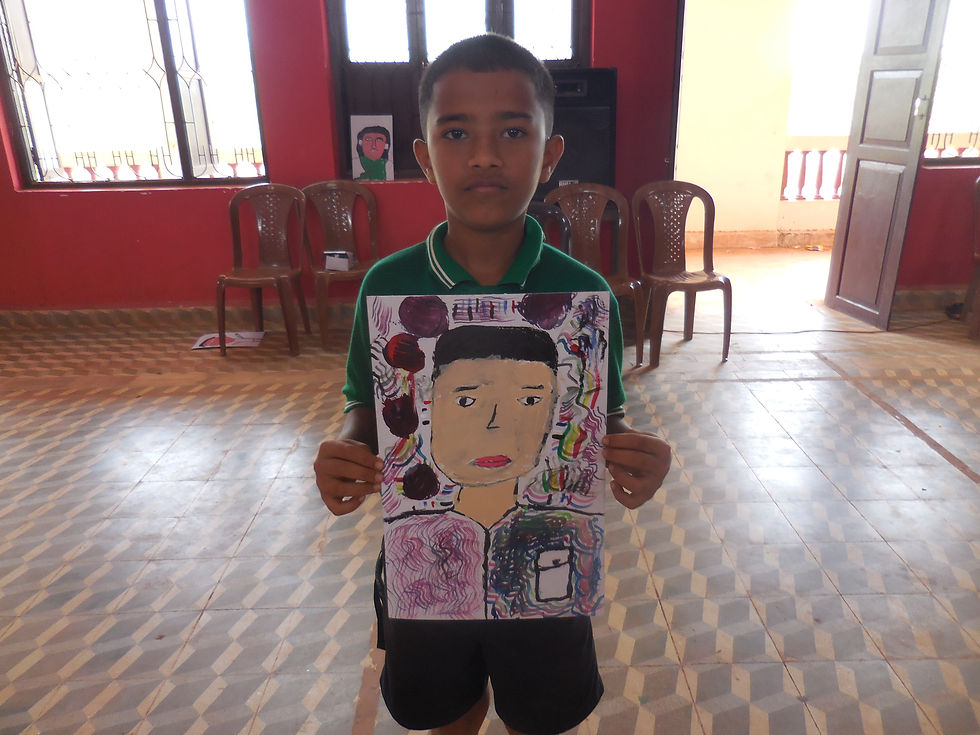SPARK by Art be a Part - Fostering Art based Learning and in-School Curriculum
- aldonaarts
- Oct 14
- 3 min read
Updated: Oct 23
Art education is a vital part of a well-rounded education. It nurtures creativity, critical thinking, and emotional expression. However, many underserved communities lack access to quality art programs. This gap can limit opportunities for young people to explore their artistic talents. In this blog post, we will explore the importance of supporting art education in these communities and how we can make a difference.

Art education offers numerous benefits. It helps students develop skills that are essential in today’s world. These skills include problem-solving, collaboration, and communication. When students engage in art, they learn to express themselves in unique ways. This can lead to increased self-esteem and a sense of belonging.
Despite these benefits, many schools in underserved areas face budget cuts. Art programs are often the first to go. This leaves students without the chance to explore their creativity. It is crucial to advocate for art education in these communities.

Our approach is to establish in-school art programs. These programs provide students with additional opportunities to engage in creative activities. They also serve as a safe space for students to express themselves.
The Role of Art Be a Part - Our Principle Donors
Art & Philanthropy based organizations play a significant role in supporting art education. They often provide funding, resources, and volunteers to help implement art programs. For instance, organizations like Art Be a Part - A Dubai based platform dedicated to empowering causes and fostering active leadership in art and charitable initiatives, are driving active force to empower lesser resourced communities.

AAF’s mission in collaboration with Art be a Part, is to provide accessible opportunities that directly supports the creation of arts programs that are inclusive, ensuring that students from diverse backgrounds have the chance to explore their creative potential.
The in-school program is held in collaboration with 4 schools, where our expert facilitators infused a sense of creative learning and storytelling through workshops centered around various artistic skills and streams.

Art education has a profound impact on mental well-being.
Engaging in creative expression helps reduce stress, anxiety, and emotional strain, fostering mindfulness and confidence among learners. Over the past four months, more than 600 students have participated in our programs — many from underserved communities where access to mental health resources is limited. Through art, they find not only a means of learning but also a pathway to healing and self-expression.
Art education also fosters social skills. Students learn to work together, respect different perspectives, and appreciate diversity.

The Future of Art Education
The future of art education in underserved communities depends on our collective efforts. By working together, we can create opportunities for young artists. It is essential to recognize the value of art education and advocate for its inclusion in all schools.
As we move forward, let us remember the importance of creativity in education. Art is not just a subject; it is a way of thinking and seeing the world. By supporting art education, we are investing in the future of our communities.

Art education is a powerful tool for change. It can transform lives and communities. By supporting art education in underserved areas, we can help young people discover their potential. Together, we can ensure that every child has the opportunity to express themselves through art.
Let us continue to advocate for art education and work towards a future where creativity is accessible to all. The impact of our efforts can be profound, shaping the lives of countless young artists. Together, we can make a difference.


Comments